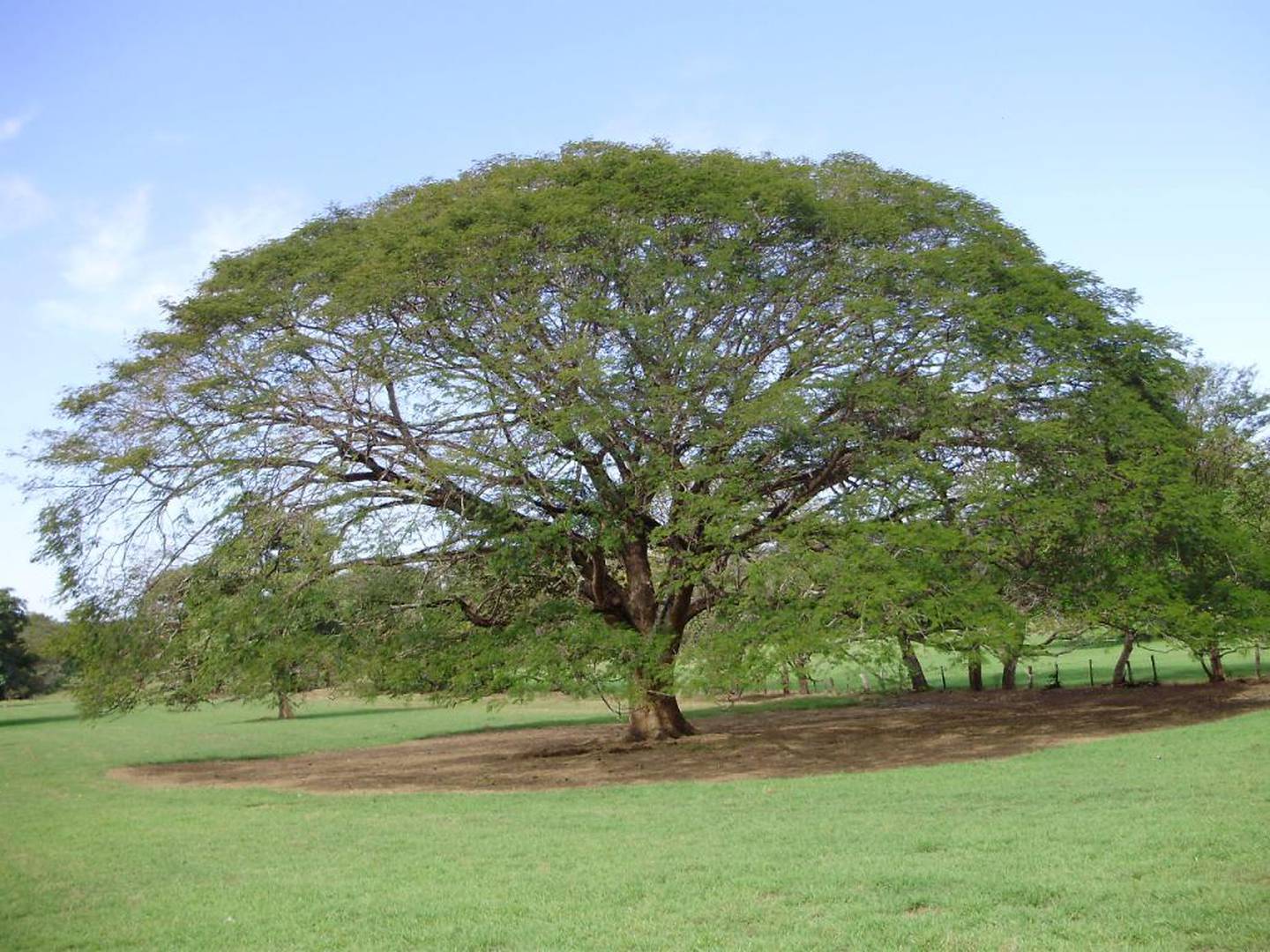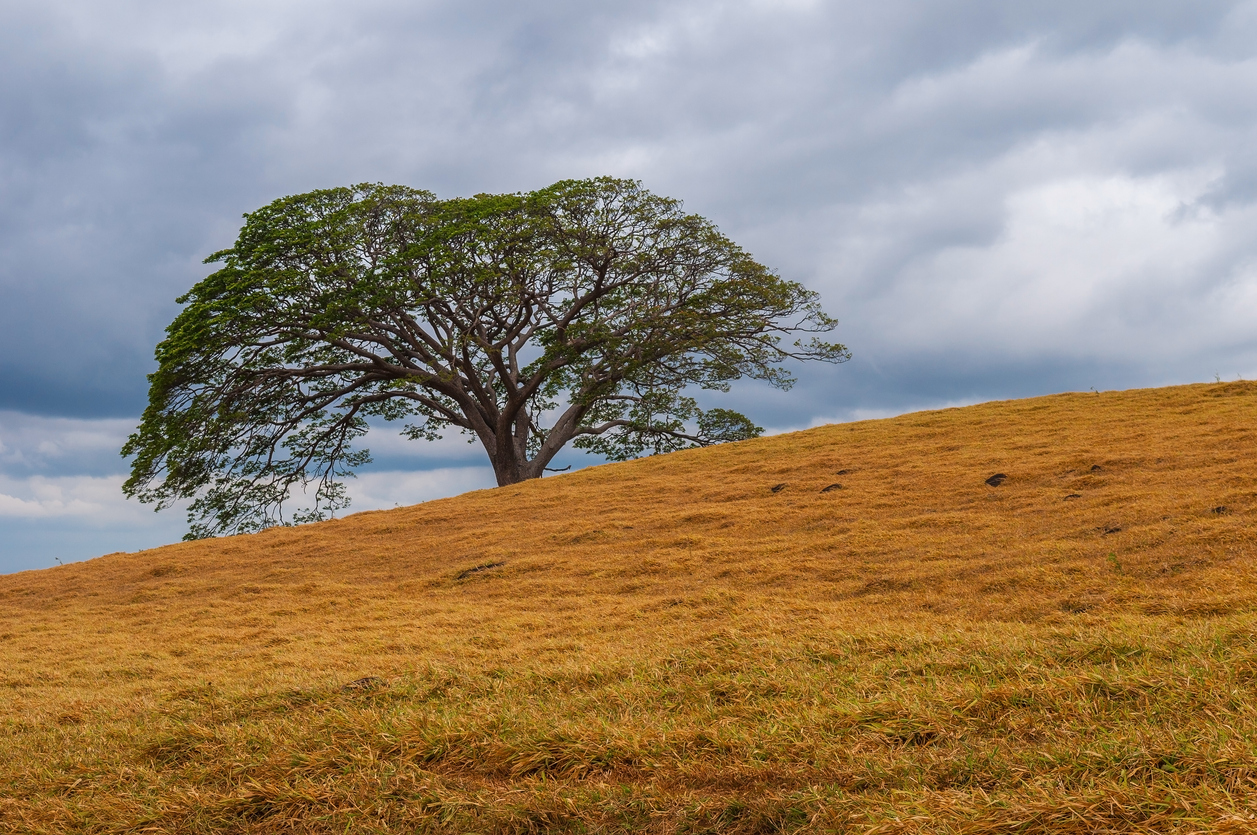What is the national tree of Costa Rica?

On August 31, 1959, Costa Rica’s national tree was named, it was to become the Guanacaste tree. Standing tall and wide, many of us have probably caught sight of the Guanacaste Tree. Not knowing and asking ourselves, what could be the name of that tree standing so boldly out there? It is distinguishable from all the rest and carries a myriad of characteristics.
Family: Fabaceae
Scientific name: Enterolobium Cyclocarpum

Briefly deciduous, canopy tree (35m of the dry tropical forest. Guanacaste is known for its superlative proportions, its hemispherical crown, and its curiously shaped seed pods.
DESCRIPTION: Straight and cylindrical, the bole (>1m) has light gray bark textured
by reddish vertical fissures. Tree shape is habitat-dependent and varies among individuals. When growing in a sunny pasture, trunks are shorter, supporting massive, horizontal limbs and giant, hemispherical crowns. In the forest, boles become tall with narrower crowns. The bipinnately compound, alternate leaves (20×17) are slowly shed during the early dry season, leaving trees briefly bare before the crown is regenerated in March. The globular heads (3)
Fruto / Fruit fragrant, white flowers (Feb-Apr) emerge from leaf axils on long pedestals. Composed of about fifty blossoms, each head boasts thousands of thin, filamentous stamens. Surprisingly, no fruiting activity immediately follows the decline of the blossoms. Instead, nine months pass before small, green pods appear (Dec). They reach full size 2 months later, and begin to harvest in March – a full year after flowering. Fruits (10, Mar-Apr) are disk-shaped, spirally organized pods. Made of thick, soft tissue with a leathery feel, the glossy brown pods contain about twenty radially arranged and very hard seeds. In June, seedlings can already be seen, germinating in the moist, early rainy season.
NATURAL HISTORY: Guanacaste trees delay the onset of fruit development so that seed maturation will coincide with the start of the rainy season. This adaptive behavior is presumably designed to give germinating seedlings time to establish root systems before the start of the next dry season. Both Guapinol (Hymenaea courbaril) and Cenízaro (Samanea saman) exhibit similar strategies.
The flowers are heavily visited by bees. The pods, however, are ignored by native fauna – and they accumulate beneath the trees. Perhaps, this tree’s seed dispersal is now extinct.
The tough seeds do not grow unless their protective rinds are punctured. This may be a strategy to keep them from germinating before foraging ground animals have transported them to a new site. The resulting mastication of the fruits would induce the scaring necessary to provoke germination.
USES: Guanacaste trees are highly valued as ornamentals and the shade they provide creates many an oasis on the searing and sun-baked tropical lowland plain.
Healthy trees generate massive, nearly annual crops of seeds. With care, these seeds can demonstrate germination rates of nearly 100%. Seedlings grow rapidly, often reaching over one meter in height in their first year. These aggressive reproductive characteristics could be beneficially exploited in reforestation projects.
According to Allen (1956), the wood is reddish brown, of fine quality and it is prized in the construction of furniture.
DISTRIBUTION: These trees are probably limited naturally to the dry tropical forests typical of the Guanacaste region of Costa Rica. They have been planted further south; individual trees often thrive in this more humid environment. Those found in areas were almost certainly introduced by settlers of the area. It ranges from Mexico to northern South America.
The Guanacaste tree is much more than a beautiful tree just sitting out there pretty in Costa Rica’s landscapes. It represents and symbolizes much more. It is all-encompassing playing a role in many aspects of people’s lives. It is a friend to shelter you and protect you on a hot day, offers healing or a bit of sustenance, and a canvas for those with a skilled hand.
Reference: Book. Trees of Manuel Antonio National Park by Patrick Harmon, 2004.
